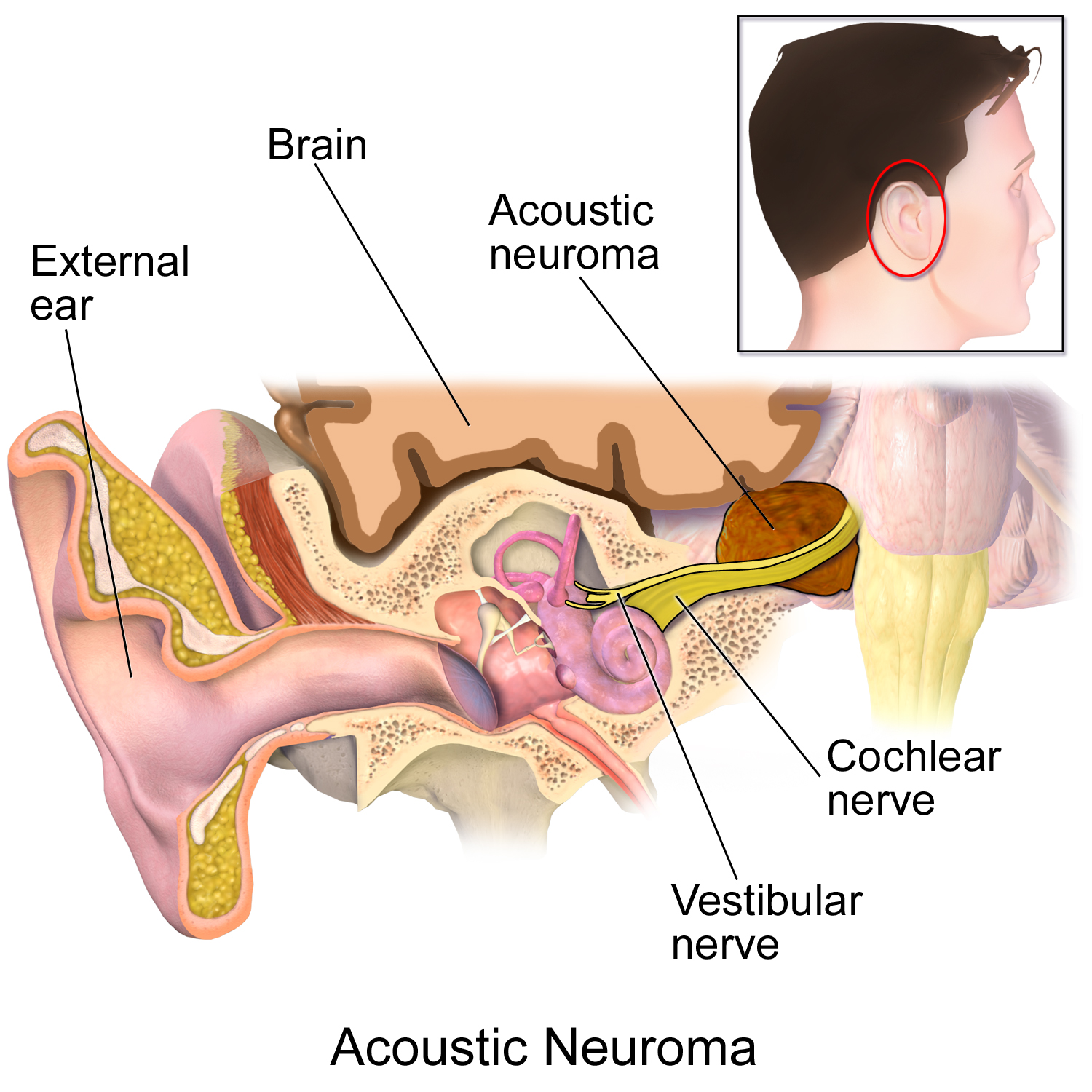This excerpt is from ANAC’s 40th Anniversary Celebration, held virtually in October 2023. It features a presentation by Michelle Gillespie, National Operations Director.
Understanding Acoustic Neuromas
An acoustic neuroma (also called a vestibular schwannoma) is a rare, non-cancerous (benign) brain tumour. It grows slowly on the hearing and balance nerve (the eighth cranial nerve), which connects the inner ear to the brain.
Although not cancer, the tumour can cause serious problems as it grows. It may press on nearby nerves—affecting hearing, balance, and sometimes the face—or even push on the brain if left untreated.

Blausen.com staff (2014). "Medical gallery of Blausen Medical 2014". WikiJournal of Medicine 1 (2). DOI:10.15347/wjm/2014.010. ISSN 2002-4436., CC BY 3.0 <https://creativecommons.org/licenses/by/3.0>, via Wikimedia Commons
Key Facts
- Benign, not cancer – does not spread to other parts of the body
- Slow growing – often present for years before being found
- Rare – most often diagnosed in adults over 40
- Cause unknown – in very rare cases, linked to a genetic condition called neurofibromatosis type 2 (NF2)
Common Symptoms
Symptoms usually develop slowly and may be mistaken for normal aging or other conditions. They include:
- Gradual hearing loss (usually in one ear)
- Tinnitus (ringing or buzzing in the ear)
- Balance problems or unsteadiness
- Dizziness or vertigo
- Less commonly: facial numbness or weakness, headaches, or vision changes
Diagnosis & Treatment
Because symptoms appear gradually, diagnosis can be delayed. If an acoustic neuroma is suspected, doctors confirm it with an MRI scan.
Treatment options depend on the tumour’s size, location, and your overall health:
- Watch & wait – regular MRIs to monitor growth
- Radiation therapy – to stop or slow tumour growth
- Surgery – to remove the tumour
Living with an Acoustic Neuroma
Treatment and recovery look different for each person. Some people experience lasting changes such as hearing loss, balance issues, or facial weakness. Others adjust with time, support, and rehabilitation.
You are not alone. Support is available through healthcare teams, family and friends, and patient organizations like the Acoustic Neuroma Association of Canada (ANAC).
ANAC is here to help. We connect you with trusted information, peer support, and resources to guide you through diagnosis, treatment, and life after an acoustic neuroma.


